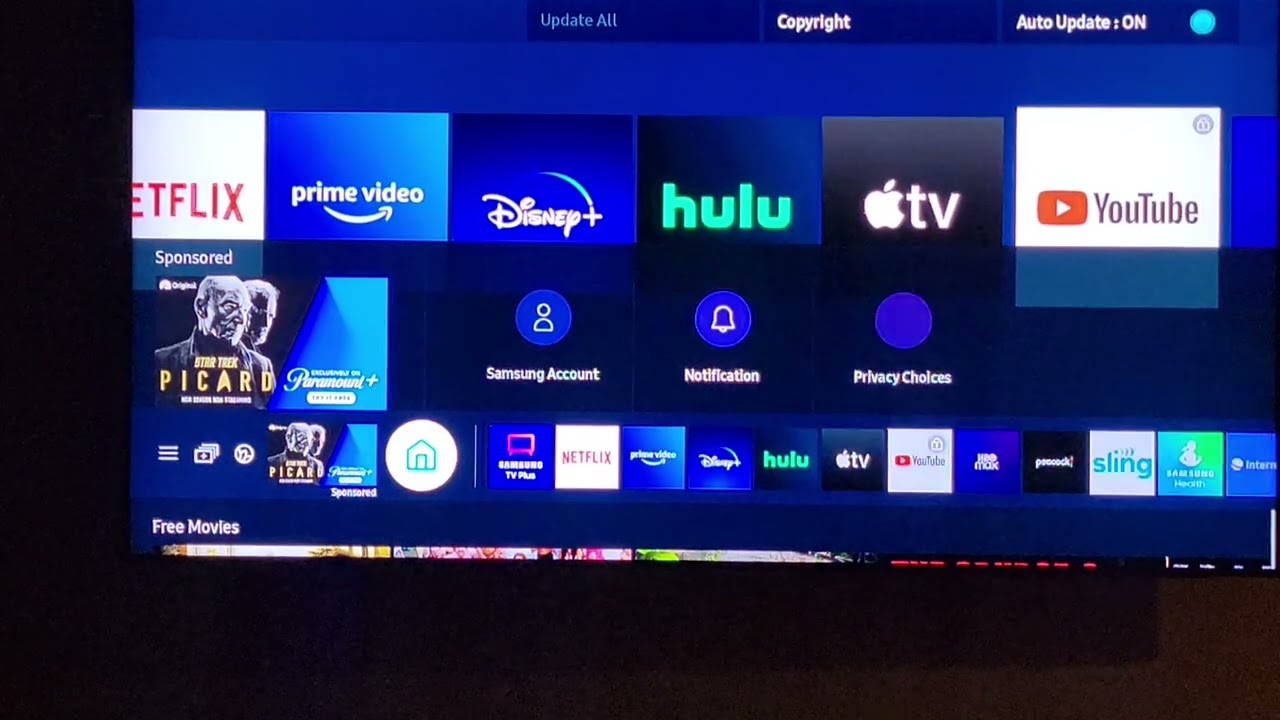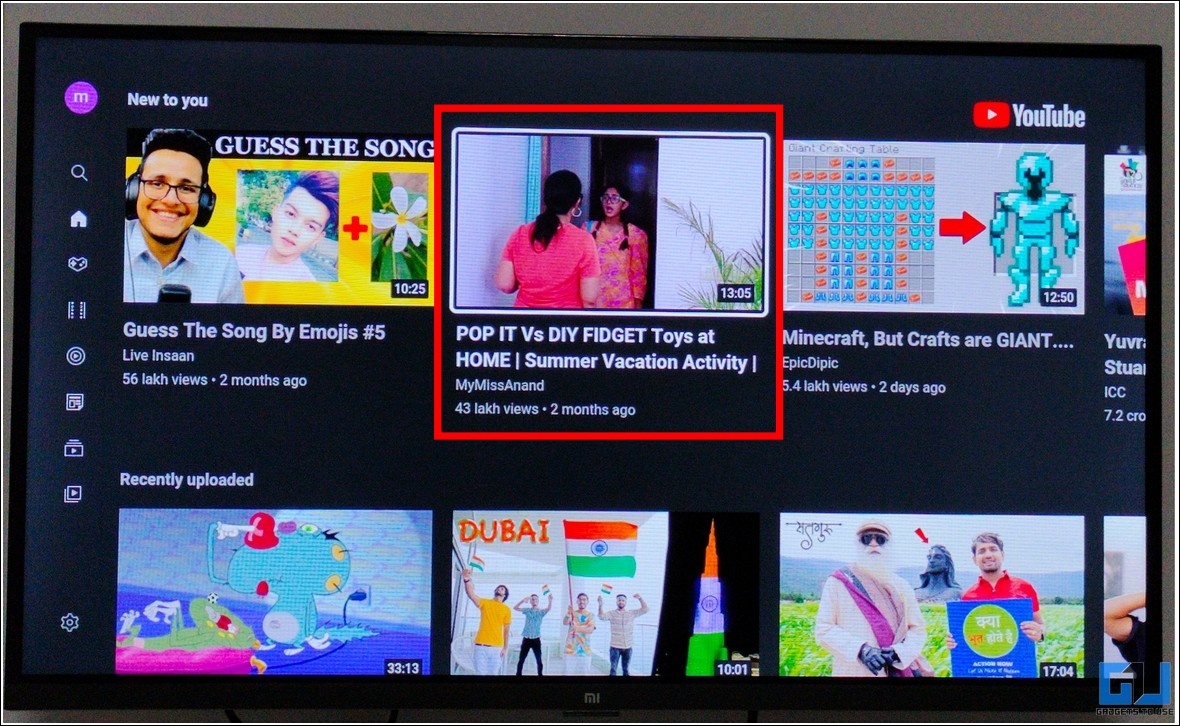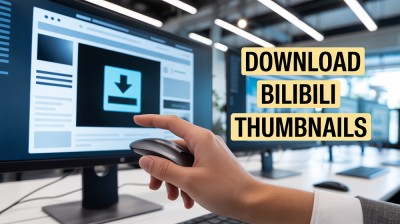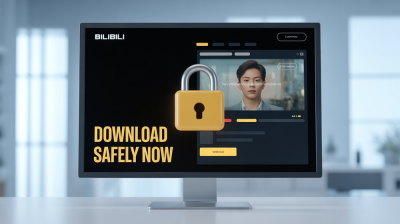Are you finding it challenging to manage what your kids or family watch on your smart TV? You’re not alone! Blocking YouTube can be a smart move to ensure that content is age-appropriate or simply to reduce screen time. In this guide, we’ll walk you through the steps to block YouTube on your smart TV and explain why you might want to consider this option. Let’s dive in!
Why You Might Want to Block YouTube on a Smart TV

There are several reasons why you might choose to block YouTube on your smart TV, and it varies from household to household. Here are some compelling reasons to consider:
- Parental Control: With a vast array of content available on YouTube, parents might want to restrict access to ensure their children are not exposed to inappropriate material. YouTube has a range of videos, some of which might not be suitable for younger viewers.
- Reducing Distractions: Sometimes, it’s not just about kids; adults can also fall into the trap of endless scrolling and binge-watching. Blocking YouTube can help in maintaining focus, especially during work-from-home days.
- Encouraging Alternative Activities: By blocking YouTube, you can encourage your family to engage in other activities, such as reading, playing board games, or outdoor play. Limiting screen time can foster better family bonding!
- Improving Productivity: If you find yourself distracted by YouTube while trying to watch something else or complete tasks, blocking it can significantly enhance your productivity levels.
- Managing Screen Time: Many families are opting for stricter screen time rules. Blocking platforms like YouTube can help you set clearer boundaries regarding how long family members can spend in front of a screen.
In summary, whether it’s for the sake of your children, improving family dynamics, or boosting productivity, blocking YouTube on a smart TV can be a beneficial step. Understanding your reasons for doing it can motivate you to follow through with the necessary changes. So, let’s explore how to implement these blocks effectively!
Also Read This: Cómo Habilitar YouTube en Tu Dispositivo y Acceder a Todo el Contenido
3. Methods for Blocking YouTube on Different Smart TV Brands

Blocking YouTube on your Smart TV can vary depending on the brand you own. Here’s a quick rundown of popular Smart TV brands and methods to restrict access to YouTube.
Samsung Smart TVs: If you have a Samsung Smart TV, you can easily use the built-in settings to block YouTube. Go to Settings > General > System Manager. From there, look for the option called Application Manager where you can disable the YouTube app. This will prevent any access until you decide to enable it again.
Lg Smart TVs: For LG users, the process is similar. Navigate to the Home menu, select Settings, and then go to All Settings. Look for General > Apps, find YouTube, and either hide it or restrict access. You can also set a pin code for added security.
Sony Smart TVs (Android TV): If you have a Sony TV that runs on Android, you can block YouTube through the Google Play Store settings. Open the Play Store app, go to Settings, and enable Parental Controls. From there, you can manage app access, including YouTube.
TCL Smart TVs: For TCL TVs running Roku, head into the Settings > Parental Controls. You can set a PIN and restrict access to specific channels, including YouTube. Just remember to keep that PIN secure!
Each brand has its quirks, but the common theme is the ability to access settings that allow you to manage applications. If you ever need to unblock, simply reverse the steps. It's as easy as pie!
Also Read This: How Much Do YouTubers Make for 1 Million Views? Earnings Breakdown
4. Using Parental Controls to Restrict Access
Parental controls are a fantastic tool for managing what your kids can see on their Smart TV, including YouTube. Here’s how to set it up effectively.
Step 1: Access Parental Controls - Most Smart TVs have a dedicated section for parental controls in their settings menu. Look for options like Restrictions, Parental Controls, or Content Settings. This is where the magic happens!
Step 2: Set a PIN - Creating a PIN is usually the first step. This prevents unauthorized access to the parental control settings. Make sure to choose a number that your kids won’t easily guess but that you can remember.
Step 3: Restrict Access to YouTube - Once inside the parental controls, you can choose to block apps entirely or set content ratings. Blocking YouTube usually involves selecting it from a list of installed apps and marking it as restricted.
- Age restrictions: Set the age limit for content. This could mean preventing access to any content rated for older audiences.
- Time limits: Some TVs allow you to set daily limits on how long specific apps can be used. This is a great way to ensure that screen time is monitored.
Step 4: Regularly Review Settings - As your kids grow, their interests will change. Make it a habit to review these settings regularly. Maybe they need access to educational content but not the latest viral trend. Adjust accordingly!
Parental controls are a powerful way to maintain a safe viewing environment for your family. By taking these steps, you ensure that your Smart TV becomes a source of fun and learning rather than a gateway to unwanted content.
Also Read This: How to Upload a Video Faster on YouTube: Speed Up Your Upload Process
5. Alternative Solutions for Managing Content Access
If blocking YouTube on a smart TV seems a bit too drastic, or if you’re looking for a more flexible approach, there are several alternative solutions to manage content access effectively. These options allow you to keep your smart TV functional while ensuring that specific content remains off-limits.
Here are a few strategies you might consider:
- Use Built-in Parental Controls: Most smart TVs come equipped with parental controls. These features allow you to set restrictions based on ratings or even block specific apps. For example, Samsung and LG TVs have settings that enable you to lock certain applications, including YouTube. Check the settings menu for your TV model to access these features.
- Create Different User Profiles: Some smart TVs offer the ability to create multiple user profiles. You can set up a profile for kids that restricts access to certain apps like YouTube while keeping an unrestricted profile for adults. This way, you don’t lose access while still managing what the kids can view.
- Utilize Third-Party Apps: Consider using third-party parental control apps that offer more comprehensive management options. Apps like Qustodio or Net Nanny allow you to monitor and restrict online activity across various devices, including smart TVs. They can help you set time limits and filter content effectively.
- Router-Level Restrictions: If you’re comfortable with tech, you can set up restrictions at the router level. Most modern routers have settings that allow you to block specific websites or apps across all devices connected to your network. This way, you can prevent access to YouTube without needing to modify settings directly on the TV.
- Educate and Communicate: Sometimes the best strategy is open communication. Talk to your kids about why certain types of content may not be appropriate for them. Establishing trust and understanding can often be more effective than outright blocking content.
Remember, the goal is to find a method that works best for your family’s needs while keeping the TV a source of enjoyable and educational content.
6. Conclusion
Blocking YouTube on a smart TV doesn’t have to be a complicated process. Whether you choose to use built-in parental controls, create separate user profiles, or even manage access through your router, there are various approaches that can help you take control of what content is accessible in your home.
Ultimately, it’s all about fostering a healthy viewing environment that aligns with your family’s values and needs. Each family is different, and finding a solution that works for you is key. Experiment with the alternatives provided, and don’t hesitate to adapt your approach as your children grow and their viewing habits change.
In the digital age, it’s essential to remain proactive about content management. By installing effective restrictions or having open conversations about media consumption, you can ensure that YouTube remains a platform for learning and entertainment rather than a source of concern.
So, whether you decide to go full-on lockdown or explore more balanced solutions, remember that your approach can evolve. Stay engaged with your kids’ media experiences, and you’ll help them navigate the vast and varied landscape of online content with confidence!
 admin
admin








